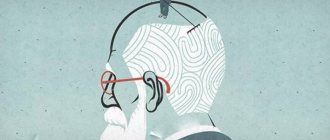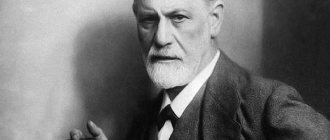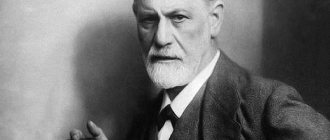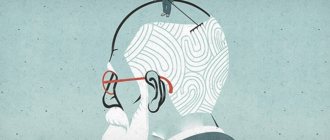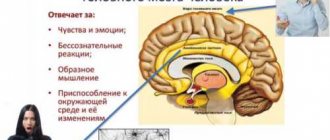What is psychoanalysis
Psychoanalysis is a psychological theory and a method of psychiatric treatment based on it. The basic principles of the concept and the term “psychoanalysis” itself were created by Psychoanalysis. Encyclopaedia Britannica. Austrian psychiatrist Sigmund Freud at the turn of the 19th and 20th centuries.
Psychoanalysis was founded by McLeod S. Psychoanalysis. Simply Psychology. on the belief in the existence of unconscious thoughts, feelings, desires and memories. As a therapy, it is often used to treat depression, phobias, panic attacks, obsessive-compulsive disorder and post-traumatic stress disorder. Psychoanalysis is closely related Brenner GH What Is Psychoanalysis? Psychology Today. with psychodynamic therapy.
Also under psychoanalysis you can use Psychoanalysis. Cambridge Dictionary. understand any of a number of theories about human personality that, based on an analysis of the unconscious in the human mind, attempt to find the underlying causes of mental problems. Psychoanalysis can be described most simply. Encyclopaedia Britannica. this method as “depth psychology”.
There is no general psychoanalytic theory of treatment Safran JD Psychoanalysis Today. Psychology Today. .
More psychoanalysis is possible Brenner GH What Is Psychoanalysis? Psychology Today. considered a form of self-knowledge, a source of new spiritual experiences. If a person spends years sharing his most intimate things with someone who helps him interpret this information, he can look at himself from a completely different perspective.
And finally, psychoanalysis is often considered by Kudryashov I.S. Psychoanalysis and its prerequisites. Journal of Siberian Medical Sciences. as a scientific and philosophical concept. Freud himself believed that psychoanalysis is neither psychology nor philosophy. He called his theory metapsychological, that is, abstract, generalizing, describing psychology itself. — Approx. author. and believed that one day it would become a science. But this was not destined to come true.
In many ways, psychoanalysis was an attempt by I. S. Kudryashov. Psychoanalysis and its prerequisites. Journal of Siberian Medical Sciences. to reconcile the divergent directions in psychology of that time: philosophical and scientific. It eventually evolved into a complex set of ideas and concepts seeking an alternative answer to the question “What is man?”
Quotes
- “Love and work are the cornerstones of our humanity.”
- “The task of making man happy was not part of the plan for the creation of the world.”
- “The voice of intellect is quiet, but it never tires of repeating – and there are listeners.”
- “You never stop looking for strength and confidence outside, but you should look within yourself. They have always been there."
- “In a number of cases, falling in love is nothing more than a psychic capture by an object, dictated by sexual primary urges for the purpose of direct sexual satisfaction and, with the achievement of this goal, fading away; this is what is called base, sensual love. But, as we know, the libidinal situation rarely remains so uncomplicated. Confidence in a new awakening of a need that had just died out was probably the immediate motive why the capture of a sexual object turned out to be long-lasting and it was “loved” even during those periods of time when there was no desire.”
- “Just today my deceased daughter would have turned thirty-six years old... We are finding a place for the one we lost. Although we know that the acute grief after such a loss will be erased, we remain inconsolable and will never be able to find a replacement. Everything that stands in an empty place, even if it manages to fill it, remains something else. That's how it should be. This is the only way to prolong the love that we do not want to renounce.” — from a letter to Ludwig Binswanger, April 12, 1929.
How did psychoanalysis come about?
The founder of psychoanalysis, Sigmund Freud, was born in 1856 in Austria and spent most of his life Ackerman CE Psychoanalysis: A Brief History of Freud's Psychoanalytic Theory. Positive Psychology. in Vienna. He entered medical school and trained as a neurologist in 1881. Soon he opened a private practice and began treating people with psychological disorders.
Freud's attention was drawn to a case described by his colleague, the Austrian physician and physiologist Joseph Breuer. Breuer's patient, Bertha Pappenheim, known in literature as "Anna O.", suffered from physical ailments for no apparent reason. But she felt better when Breuer helped her remember her traumatic experiences. This case will be described more than once by Freud Z. Famous cases from practice. M. 2007. Freud and other authors.
Freud became interested in the unconscious and in the 1890s, together with Breuer, began studying the state of neurotic patients under hypnosis. Colleagues came to the conclusion that the patients' condition improved when they learned through hypnosis about the real sources of their problems.
Freud also noted Psychoanalysis. Encyclopaedia Britannica. that many patients feel the effect of such therapy without hypnosis. Then he developed the technique of free association: the patient told the psychoanalyst everything that first comes to his mind when he hears words such as “mother”, “childhood”.
Freud also saw a pattern: often the most painful experiences of his patients were related to sex. He suggested that these anxious feelings were a consequence of suppressed sexual energy (libido), manifested in various symptoms. And those, according to Freud, are psychological defense mechanisms.
Using the technique of free association, Freud began to study the meaning of dreams, slips of the tongue, and forgetfulness. He considered Psychoanalysis. Psychology Today. that childhood traumas and conflicts give rise to sexual desires and aggression in a person as an adult.
The goal of Freud's psychoanalytic therapy was McLeod S. Psychoanalysis. Simply Psychology. the release of these repressed emotions and experiences, that is, an attempt to make the unconscious conscious. This healing is called “catharsis.”
Freud insisted that reducing symptoms is not enough; the problem will not be solved until its cause is eliminated.
During sessions of psychoanalytic therapy, the patient lay down McLeod S. Psychoanalysis. Simply Psychology. on a special couch, and Freud himself sat behind, taking notes. This helped both free themselves from social restrictions. To achieve a positive result, sometimes it was necessary to Ackerman CE Psychoanalysis: A Brief History of Freud's Psychoanalytic Theory. Positive Psychology. conduct two to five sessions per week for several years. Sometimes patients, according to Freud Z. Famous cases from practice. M. 2007. Freud himself, experienced memories and associations so vividly, as if they were actually returning to the past. Although, in essence, psychoanalytic therapy is just a frank conversation.
Freud's couch. Image: Robert Huffstutter/Wikimedia Commons
Concept
We have already said a lot about Freud’s theory, but all of this is somehow generalized, mixed up (new and old). What is the concept of Freud's original theory of psychoanalysis? Let us outline the main provisions (features) of psychoanalysis:
- All psychological problems of the individual are caused by the conflict between the conscious and unconscious.
- Physiological needs suppress the needs of higher levels. As Freud said, “at the basis of all our actions are the desire to become great and the sexual desire.”
- Every incident in a person's life has its consequences.
- Every action has an obvious or hidden motive, which is associated with a person’s previous experience.
- The individual development of a subject is determined by the structure of the personality, childhood and youth experience.
- The psyche is a complex mechanism consisting of three levels: It, I, Super-ego. It is important to study all this in a comprehensive manner and look for the causes of psychological problems in the present at the level of the It (unconscious).
In the theory of psychoanalysis, the subject of study is unconscious motives leading to mental disorders.
Now let's move on to an analysis of the types of psychoanalysis.
How psychoanalysis influenced the development of psychology
During the 20th century, psychologists borrowed many of Freud's ideas and observations. This is especially true for Martynenko T.S., Deinekina A.S. The influence of psychoanalysis on modern psychotherapy. North Caucasian Psychological Bulletin. concepts of levels of consciousness, defense mechanisms and stages of psychological development.
Thus, before Freud, dreams were considered a phenomenon not worthy of scientific attention. However, his book “The Interpretation of Dreams” and the concept outlined in it aroused intense interest in this area of human life, which continues to this day.
Freud's further developments were used by Psychoanalysis. Encyclopaedia Britannica. , for example, to create the theory of child psychoanalysis. Pioneers in this area were Melanie Klein and Anna Freud, daughter of Sigmund Freud.
In a slightly different form, Freud's work was continued by Ackerman CE Psychoanalysis: A Brief History of Freud's Psychoanalytic Theory. Positive Psychology. his student Carl Jung, creator of analytical psychology. He disagreed with the teacher on the nature of libido (the energy underlying human aspirations and actions) and the unconscious, as well as the causes of human behavior.
Freud viewed libido only as a source of sexual energy, while Jung argued that it was much broader and included motives from sex to creativity.
Also, Jung did not share Freud's idea that human behavior is dictated only by past experience. He believed that future aspirations also played a significant role.
Jung's work underlies most modern psychological theories and concepts. For example, he introduced Brenner GH What Is Psychoanalysis? Psychology Today. into circulation such well-known terms as “personality archetypes” and “collective unconscious”.
In the middle of the last century, psychoanalysis entered into close interaction with the arts, humanities and philosophy. For example, he provided Elkan O. B., Putra V. A. The influence of psychoanalysis on the cinema of the twentieth century. Bulletin of Tomsk State University. Cultural studies and art history. a great influence on German expressionism, which, in turn, largely determined the emergence of the horror film genre. Freud's concept greatly influenced the work of such directors as Alfred Hitchcock, Federico Fellini, Michelangelo Antonioni, Paolo Pasolini. Freudianism also plays a significant role in the films “Basic Instinct”, “Eternal Sunshine of the Spotless Mind”, “Antichrist”, “Shutter Island”.
Look
